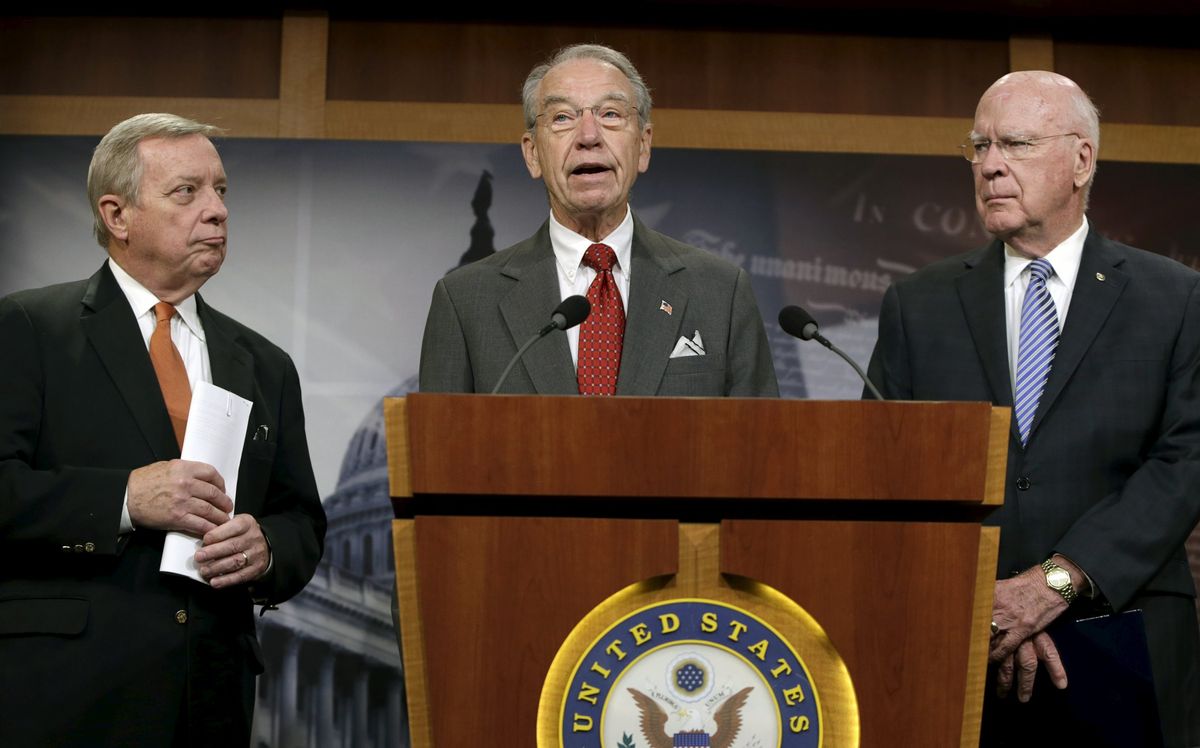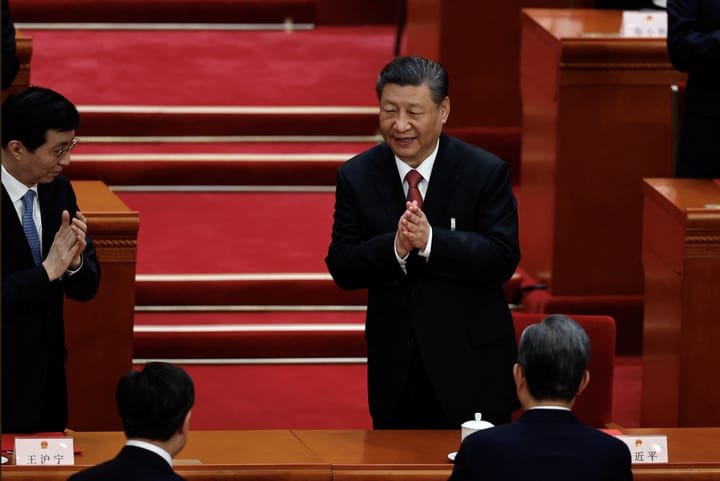The debate over Congressional term limits, explained

A few minutes every morning is all you need.
Stay up to date on the world's Headlines and Human Stories. It's fun, it's factual, it's fluff-free.
It has been a consistent fact for decades in American politics that Congress is unpopular and that implementing term limits for members of Congress is popular.
At the age of 87, Alaska’s Representative Don Young, a Republican, is the longest-serving member of either chamber of Congress, having first assumed office in 1973. Young is closely followed by Senator Patrick Leahy, a Vermont Democrat, and Senator Chuck Grassley, an Iowa Republican, who both entered Congress in 1975. Leahy is 80 and Grassley is 87.
With President Joe Biden, 78, recently becoming the oldest sitting president in the history of the United States, the age of America’s aging politicians has become a regular focus of attention. Since the ratification of the 22nd Amendment to the Constitution in 1951, presidents have been limited to two terms, but there are no such term limits for the legislative (or judicial) branch of the government.
With the rapid advance in technology over the last few decades and the changing face of the nation’s electorate, some observers have argued that term limits could help bring in people with fresh perspectives who would be better equipped to legislate in the modern era. Term limits, advocates contend, would also help limit entrenched power and encourage lawmakers to get things done.
However, skeptics warn that Congressional term limits will worsen a lobbying pipeline that blurs the line between the private and public sector and encourages legislating for personal enrichment. There is also research that suggests term limits do more harm than good, including exacerbating polarization and stripping expertise from the government.
Here are the two sides of the debate over Congressional term limits.
The arguments for Congressional term limits
In 1994, writing for the Heritage Foundation, an American conservative think tank, Republican political analyst, Daniel Greenberg, argued in favor of Congressional term limits.
Greenberg’s rationale was that “term limits would ameliorate many of America’s most serious political problems by counterbalancing incumbent advantages, ensuring congressional turnover, securing independent congressional judgment, and reducing election-related incentives for wasteful government spending.”
More importantly, Greenberg claimed, “Congress would acquire a sense of its own fragility and temporariness, possibly even coming to learn that it would acquire more legitimacy as an institution by doing better work on fewer tasks.”
Term limits would make incumbent politicians have to work harder, the argument goes, giving political challengers more leverage.
Term limits would ensure new perspectives are represented in Congress, while also diminishing “incentives for wasteful election-related federal spending that currently flourish in a careerist congressional culture.”
Perhaps Greenberg’s most indisputable argument for Congressional term limits is that it is supported by most Americans (more on that below). While term limits enjoy broad support, Greenberg claims they are opposed by “elected officials and the special-interest groups that depend on them.”
The arguments against Congressional term limits
Offering the opposing view is Casey Burgat, the director of the Legislative Affairs program at the Graduate School of Political Management at George Washington University. Writing for Brookings, an American center-left think tank, Burgat lays out “Five reasons to oppose congressional term limits.”
Burgat’s first reason is that term limits restrict voter choice by barring particular candidates from running for office. Secondly, the candidates who are allowed to run will lack the valuable experience that can help them navigate a complicated role. “Crafting legislative proposals is a learned skill,” Burgat writes, “as in other professions, experience matters.”
The third reason is that members of Congress won’t be incentivized to gain policy expertise. Knowing that they will soon be out of office, senators and representatives would focus on personal priorities rather than gaining the knowledge that will make them effective legislators. “Thus, term limits would impose a tremendous brain drain on the institution,” he claims.
The fourth and fifth reasons are related: term limits would “kick out effective lawmakers” while doing “little to minimize corruptive behavior or slow the revolving door.” A legislator that learns the system and strives to make positive changes in Washington, DC will still have to leave. At the same time, a member of Congress who only took office for personal enrichment won’t be handcuffed.
To support this final point, Burgat points to studies that examined the effects term limits had on state legislators. These studies found that, for a variety of reasons, interest groups or lobbyists often have greater influence when legislatures have term limits. It wasn’t a uniform effect across all states, but it was common enough to suggest a clear pattern.
One study published in 2011 stated that, for lower chambers, “term limits pull power away from legislative leadership and toward other institutional actors such as governors and interest groups.” This is because inexperienced lawmakers tend to defer to the executive branch or to the knowledge base of lobbyists who will have likely been around longer.
A study from 2001 also reinforced Burgat’s third point, finding that “term limits have diminished the knowledge base of state legislators.”
Finally, Burgat concludes term limits would worsen the “revolving door” of legislators leaving Congress to become lobbyists for special interest groups: “mandating member exits ensures a predictable and consistently high number of former members available to peddle their influence.”
Will Congressional term limits ever happen?
It has been a consistent fact for decades in American politics that Congress is unpopular and that implementing term limits for members of Congress is popular. The reasons for Congress’ unpopularity vary, but many of them have to do with the perception that the legislative branch is stuck in gridlock and gets little done. Many people believe members of Congress are more focused on political wins than the country’s success.
Since the 1990s, there have been various attempts to enact Congressional term limits. During the 1994 midterm elections, multiple states had term limit measures on the ballot, with almost every measure passing with wide margins.
Alas, for those voters, the measures were found unconstitutional. In 1995, with a 5-4 decision in U.S. Term Limits, Inc. v. Thornton, the Supreme Court ruled, “States cannot impose additional restrictions, such as term limits, on its representatives in the federal government beyond those provided by the Constitution.”
All these years later, Congressional term limits remain a popular political football. In the weeks before the 2016 election, Rasmussen Reports found 74% of likely voters in the US supported them. Two years later, Gallup polling reported 75% of respondents were in favor of term limits (that same poll found 63% supported abolishing the Electoral College).
Republican Senator Ted Cruz has long been an outspoken proponent of term limits. On January 25, Cruz introduced a joint resolution to propose a Constitutional amendment that would limit senators to two six-year terms and representatives to three two-year terms. It’s the third time Cruz has proposed this amendment, having done it previously in 2017 and 2019.
Considering that Biden and the Democrat-controlled Congress have an ambitious agenda and numerous pressing issues on their plate, it’s unlikely Cruz’s proposed amendment will get much attention this term.
Cruz is currently on his second term as a senator and would be forced to retire if his amendment were passed. He has yet to state whether he plans to leave the Senate when his current term is over in 2025.
Have a tip or story? Get in touch with our reporters at tips@themilsource.com




Comments ()